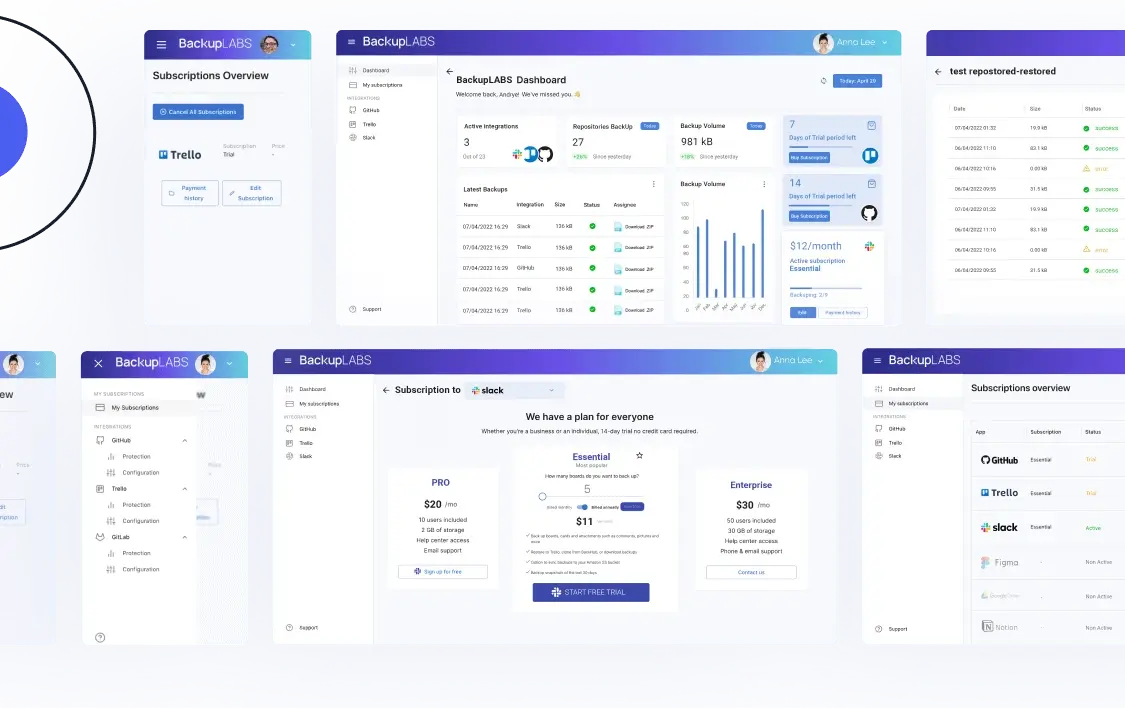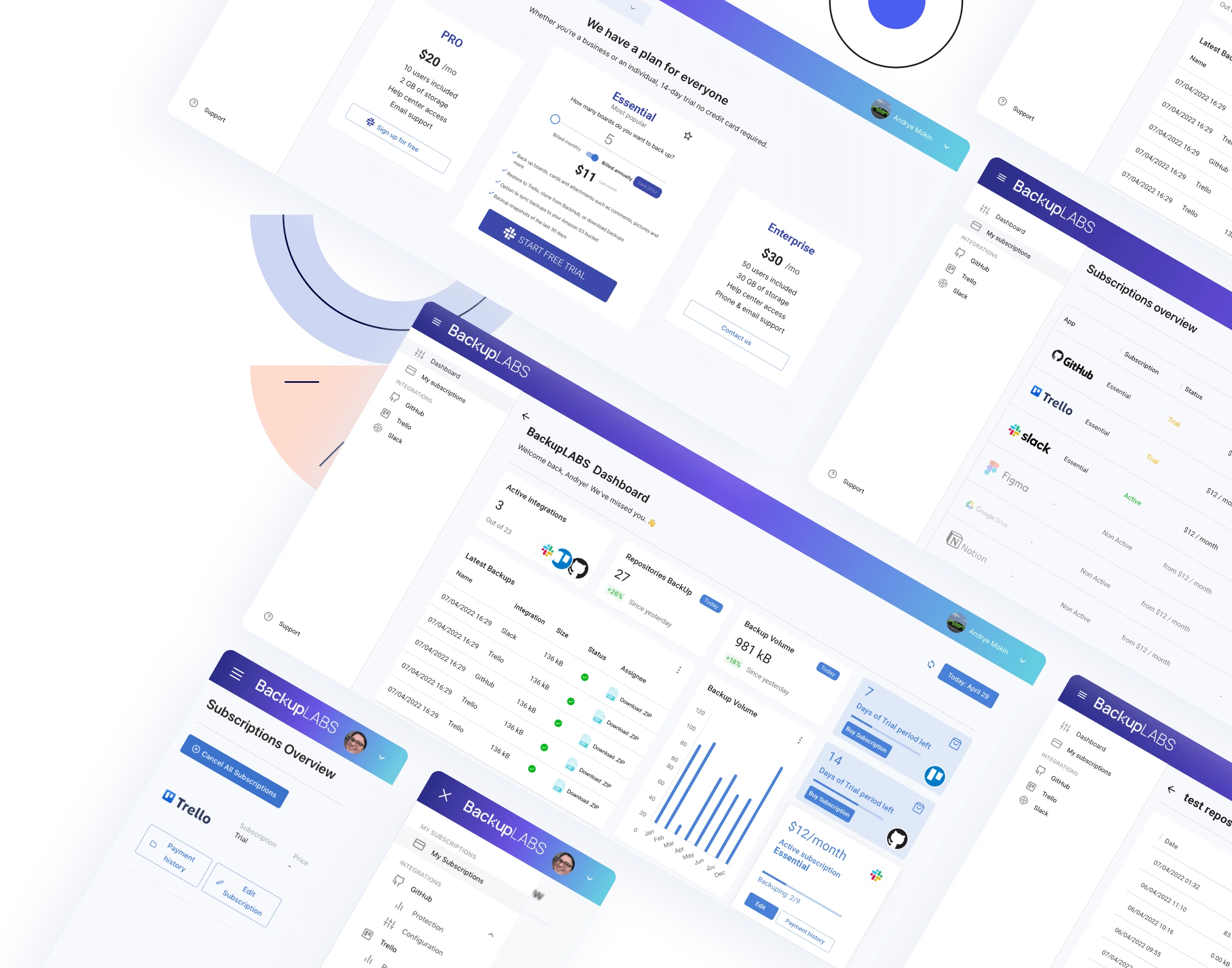What we do
Services
Experts in


Before contacting us, our client had been managing the operational side of the business, helping his customers back up data from different sources. The technical side of the business was based on an external SaaS product that didn’t meet all the needs of the company and its customers.
Wanting to improve the quality of his service, our client identified gaps in the SaaS product he was using, analyzed his customers’ needs, and came up with an idea to build his own SaaS platform.
While looking for a technical partner, our client researched several software development companies by looking at their websites and blogs and decided to contact us. With our expertise in developing SaaS products and beneficial partnership conditions, Clockwise Software was the best choice for our client.
Prioritizing the services to integrate into the platform so that our client had a competitive advantage in the existing market.
Taking into account that our client wanted to integrate a number of services for the MVP version of his platform, we had to prioritize them. Our research showed that starting with GitHub would be the best decision because supporting GitHub backups was one of our client’s priorities and because this integration offered technical opportunities to be used as the basis for further integrations.
The next services we decided to integrate were GitLab and Trello. We selected these services because
Providing a robust architecture was one of our client’s main product requirements. Our client was ready to spend some time at the beginning of the project researching the best solutions and determining an ideal software architecture that would allow software developers to quickly add new modules in the future.
To handle this challenge, we had to choose the right initial service to integrate into the platform. This would allow us to build an ideal architectural solution with maximum effectiveness and reasonable efforts. With such a solution, we would be able to quickly scale the platform in the future.
We chose integration with GitHub as the basis for building the whole project. While working with the GitHub API, we built a stable backend structure suitable for fast and seamless integration of almost any service our client needed. The initial structure appeared to be so effective that we managed to integrate the next service, GitLab, in half the time.
In addition to extendability opportunities on the back end, we found ways to quickly develop the frontend for new modules. Our frontend developer built a custom structure that allowed us to create frontend modules on demand with little extra effort. Once we built this custom structure, we were able to speed up the development of new modules by several times compared with the very first frontend module.
Our customer is currently targeting the UK market but is planning to enter the US and other countries. Therefore, another challenge was to ensure proper platform performance as the number of users grows.
To ensure stable performance of the platform under high load, we opted for AWS S3 storage, which provides almost unlimited storage opportunities.
One more technical decision that increased scalability was the use of microservices. No matter how many users are on the platform simultaneously — a hundred, a thousand, or a million — the platform works seamlessly.
In the course of our cooperation, we also had to
handle other minor challenges:
We’ve implemented all the functionality our client wanted to see in the MVP version of the platform. Now, the platform supports backup of GitHub and GitLab repositories as well as Trello boards, can process payments via Stripe, and has a high level of data protection.
At the moment, our client is testing the current version in the UK and gathering customer feedback. Meanwhile, we continue scaling the existing platform, adding further integrations (Jira, Asana), implementing new features, and working on more subscription plans. The work we are currently doing will prepare the platform for its launch in the USA and other countries.